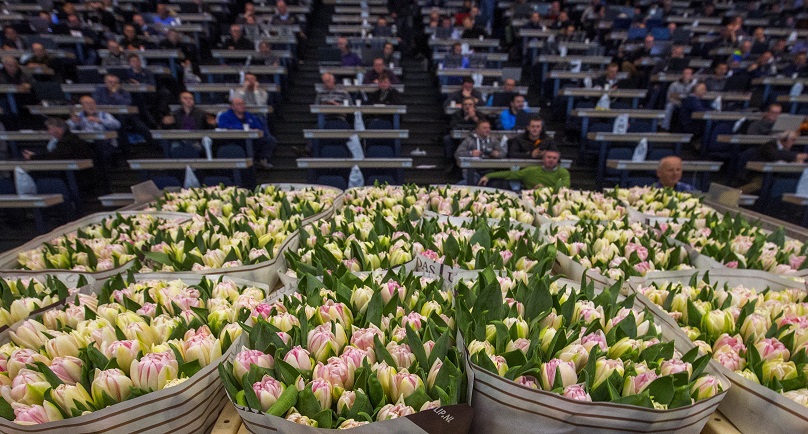Image: Buyers purchase flowers at a FloraHolland warehouse in Rijnsburg, the Netherlands, March 16, 2016. REUTERS/Yves Herman
AALSMEER, Netherlands (Reuters) – Warehouses are not normally tourist stops, but one exception is the century-old Royal FloraHolland depot outside of Amsterdam where millions of flowers are distributed every day.
The same tourists who flock to the flower barges in central Amsterdam get up at dawn and pay 7 euros ($8) to visit the warehouse. It is the size of 400 soccer fields and some 20,000 varieties of flowers and plants are sold there.
Each morning, the world’s largest flower market swings into action by 6 a.m., when a cooperative founded in 1911 by Dutch growers holds an auction where bidders buy products to be exported all over the world.
Chances are that the flowers for weddings in London, birthdays in Spain and funerals in Germany passed — quickly — through FloraHolland.
By the time the doors open for visitors at 7 a.m., dozens of electric carts pulling trolleys stacked with flowers and plants are zipping across the warehouse floor, sending scents floating toward the rafters.
While it is the opportunity to see millions of flowers at once that draws tourists, equally striking is the logistical prowess of the cooperative, founded to bring the supply of a highly perishable product into a single space.
Within 90 minutes, flowers bought at the auction are delivered to the buyers, who load them onto trucks and send them speeding toward every corner of Europe or flown around the world.
Today the market has some 4,500 members from countries including Kenya, Ethiopia, Israel, Colombia, Ecuador, Belgium, Italy and Britain, with 4.5 billion euros ($5 billion) in annual revenue, helping to make the Netherlands the largest exporter of cut flowers in the world.
(Reporting by Steve Scherer; Editing by Robin Pomeroy)
Copyright 2015 Thomson Reuters. Click for Restrictions.


